As an Amazon Associate I earn from qualifying purchases.
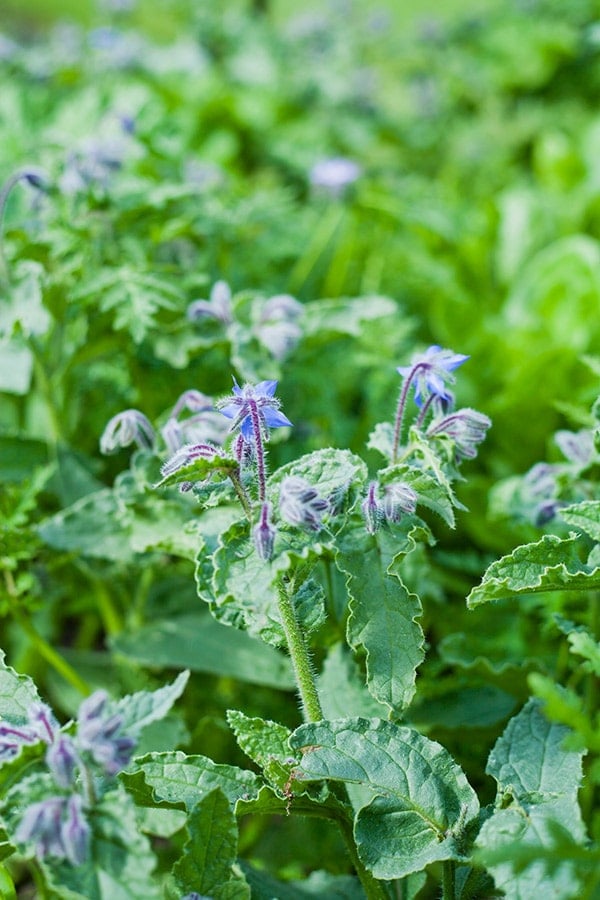
Not everyone knows that the borage plant is edible. So are borage flowers.
Most people barely even know what borage is, let alone what you might do to highlight its flavor. Borage arrived in my garden years ago when I planted it not to eat, but as a bee attractant: The more bees in your garden, the better they pollinate its other plants.
Once you plant borage, like purslane, you have it forever unless you nuke your garden. It so readily seeds itself I get volunteers sprouting all year long; sometimes those seedlings get, well, a little aggressive.
Then it was time to prep that bed to plant a round of summer cannellini beans. I pulled everything — including the borage plants — turned the soil and added lots of compost. I planted my beans, watered, and waited. What came up? Borage. Lots and lots of borage. No beans. Grrrr… Then I got zen about it and thought that if life has given me borage, I ought to make borage-ade. Or something. And as borage seedlings are not nearly as prickly and spiny as an older borage plant, this was the time to use as many of them as I could.
Well just what do you do with 100 pounds of borage seedlings? Frankly, you compost most of them. But borage, especially young borage, has a crunchy, cooling flavor that can best be described as herbal cucumber.
Borage plays well with fish, and indeed, every now and again I get a faint fishy aroma coming from this plant. Holly can’t detect it, so maybe it’s just that I’ve smelled too many fresh fish over the years; many species, especially smelt, smell like cucumbers.
Salads were the obvious choice. Beyond that, I looked around my cookbook collection and came up nearly empty. Yes, Euell Gibbons has some excellent ideas in his Stalking The Wild Asparagus: Borage drinks, borage jelly, etc. But Euell likes jellies with his meat, a la lamb with mint jelly. I don’t, and I eat jellies and jams rarely. And borage juice requires a juicer — doing it with a food processor means you need to press everything through a sieve, which is a big pain in the ass.
I found a few hippy-dippy recipes for borage that looked too mystical for me.
At a loss, I decided to make one of my green soups. Long-time readers of this space know I really, really like bright green sauces and soups. So why not a borage soup?
Borage being an herb, I figured I needed something to add body. A russet potato worked fine. A little veggie stock and a smidge of duck fat added to a heap of blanched borage (borage only needs about 30 seconds in salted boiling water to blanch, by the way), and, after sufficient buzzing, I had a nice green soup.
I like this soup. It is filling, savory, a little herby, and you get just enough of the cucumber-y flavor of borage to make this soup cooling, even served hot. I ate it hot, at room temperature and cold, and I preferred it at room temperature. (Here is the full recipe.) But still… While it was a good soup, it did not scream BORAGE to me.
Ligurian Pansotti, a triangular ravioli filled with borage and ricotta cheese, was another good choice. Borage stands in for the more common spinach.
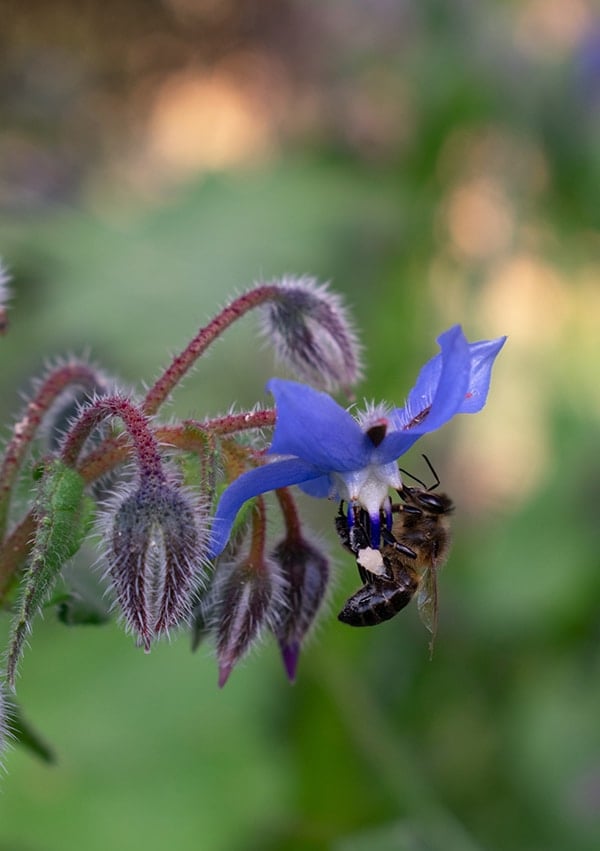
This rocks. It’s just a variation on that classic ravioli filling we all know and love. Only here you definitely get that cucumber taste, making the filling light as air. A dash of nutmeg helps a lot, too. Making ravioli can be fiddly, but it’s worth it, as these ravioli are pretty cool-looking. (Full ravioli recipe here.)
So now we have salad, a soup and a pasta course. I definitely had this Iron Chef Battle Borage thing going on. Time for a main course. Borage goes well with fish, and as I’ve been reading Seven Fires: Grilling the Argentine Way, I had chimichurri on the mind. So yeah, I made borage chimichurri.
It’s definitely good stuff, and definitely a sauce I’d use with fish, pheasants, quail or chicken. Turkey would be pretty good with it, too. Not so sure I’d do borage with red meat, though. The chimichurri is cooling from the borage and cutting from the vinegar, with a hit of raw garlic and a base note from fresh oregano.
All it needed was some grilled chinook salmon. Borage chimichurri is both pretty to look at on the salmon, and a good balance to its richness.
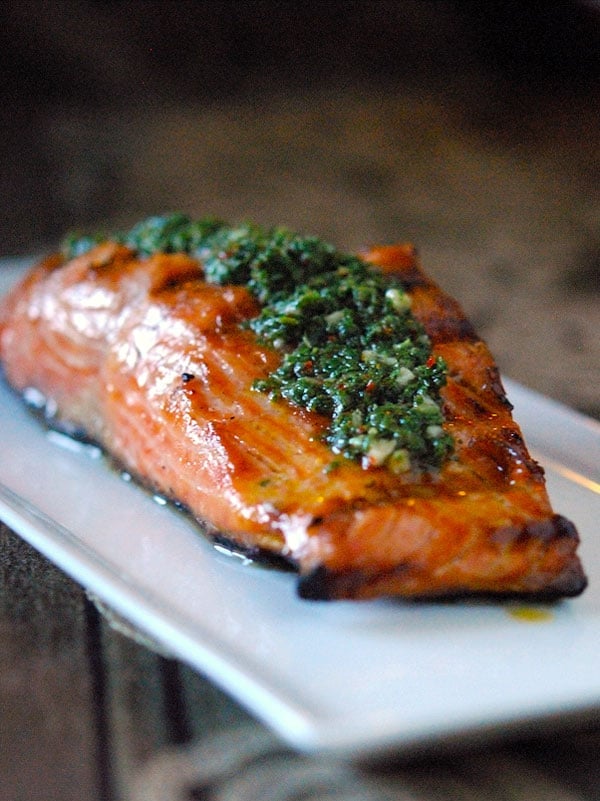
Main course down. Dessert? Nope. Didn’t go there. Not sure a borage ice cream or sorbet would be good, although a savory borage sorbet would be a good palate cleanser between courses, I suspect.
What was the point of all this? Well, those damn seedlings choked out all my beans, so I felt I needed to exact a measure of revenge against the interlopers. Besides, I may never get such a flush of borage seedlings again, and I wanted to make hay while the sun shined, so to speak.
But it’s really an issue of getting to know an ingredient — really getting to know it — that made this so much fun. Sure borage is obscure. But it’s easy to grow and I’m glad to have it around. Now I know what I can do with it.
I also know I did not come near to exhausting borage’s uses. Anyone out there have any others? I’m all ears, as there will always be more borage lurking somewhere in my garden.
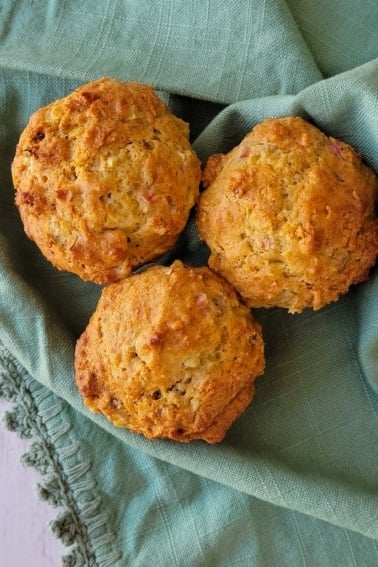
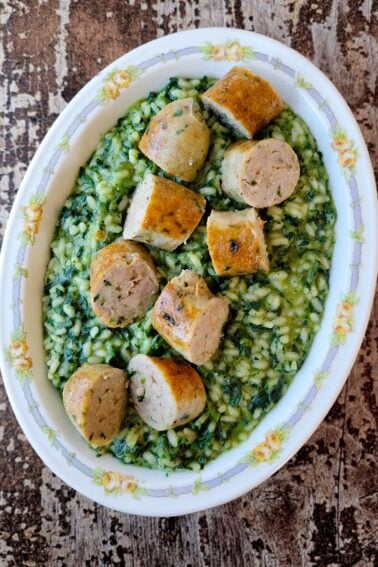
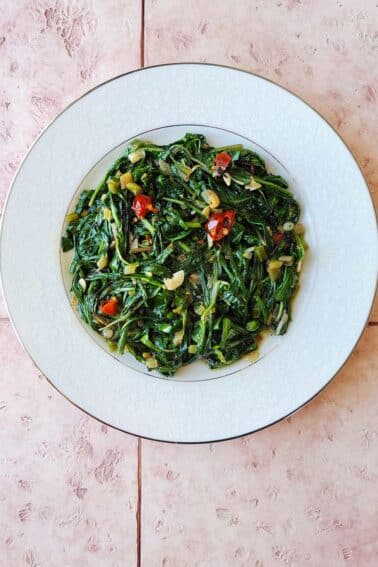
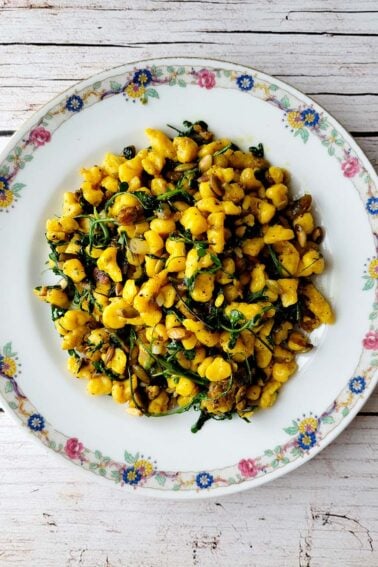
Can you stuff the leaves like cabbage or grape leaves?
In Northern Spain the mature stems are a delicacy called borrajas. They are de- stringed then boiled with potato, then served with a sofrito of garlic and diced Serrano ham fried in olive oil; for a delicious variation, add sliced almonds to the sofrito. Sofrito is a brilliant addition to most boiled or steamed veg. Excellent with broad beans. Vegans can just omit the ham and add more garlic. Still delicious poured over the top of your veg at the moment of serving.
Maggi: Thank you! That’s fascinating and I did not know that.
Thanks for the inspiration! Borage soup: Blanche borage. Blend with boiled yukon potatoes with peel, pesto, celery, schmaltz, duck broth + fat, toasted coriander, cumin,turmeric, black pepper, sal de colima. Don’t boil. Serve warm. If you want, for texture, add crispy duck and chicken skin and steamed kabocha squash skin. Very creamy and yummy, friends went back for seconds.